It's half past six on Tuesday evening and, with three hours to transmission time, the Prime Time production team are finalising their first programme of the new season.
There's a sparky debate going on amongst the team – including presenters Miriam O'Callaghan and David McCullagh, editor Donogh Diamond and deputy editor Paulette O'Connor – about timings and priorities.
Tonight's show will lead with the housing crisis, along with a story on flooding insurance. Only two items, but it's a complicated overall package. The housing segment includes an interview which O'Callaghan has already taped, while she will also be doing a live broadcast from Portobello, where a meeting of tenants is being held.
Then McCullagh will be grilling Minister for Housing Eoghan Murphy in the studio.
Later in the show, following a report on how people living in areas secured against flooding still can't get insurance, he'll have Fine Gael's Joe McHugh and Dara Calleary in to debate the issue.
That’s two pre-taped segments, a live outside broadcast, a one-on-one with a Minister and a one-on-two to finish it off – all squeezed into 40 minutes of live and therefore not completely predictable broadcasting, not taking account of the credit sequences, handovers, and other bits of furniture which eat up more precious seconds.
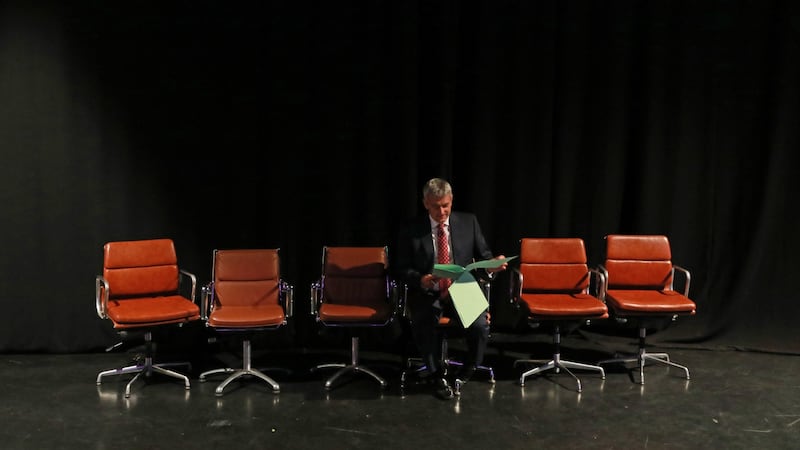
Much of the meeting is taken up with haggling over how long each element needs to be, and what can be shaved in one place to allow more breathing space in another.
Someone asks if McHugh and Calleary can be dropped. "They're driving up from Donegal and Mayo, so absolutely not," is the terse answer.
Will there be enough time for Peter McVerry and landlords’ representative Fintan McNamara to make their points in Portobello? “Make sure to warn Peter McVerry it’s going to be short,” says O’Callaghan.
And how long does McCullagh need to get his teeth properly sunk into the Minister? Not too long, apparently.
“Ultimately, people tune in if it’s a good story,” O’Callaghan tells me earlier, sitting in the poky office she shares with a colleague. “If it’s good journalism and if they ultimately can trust you. You have to fight for that trust. You can lose it. You have to fight for it back.
"But I don't think it's about balloons and glitz. If Angelina Jolie took over from me on Prime Time, unless the journalism was good people would be bored after a night."
Along the walls of the corridor outside are framed pictures and memorabilia charting the genealogy of Irish current affairs television. First came Seven Days (1966-1976), then Today Tonight (1980-1992).
Remarkably, Prime Time has now lasted longer than both of those predecessors combined, and next week celebrates 25 years on air with two special programmes looking at the social, political and economic shifts and cycles it has covered since it launched in 1992.
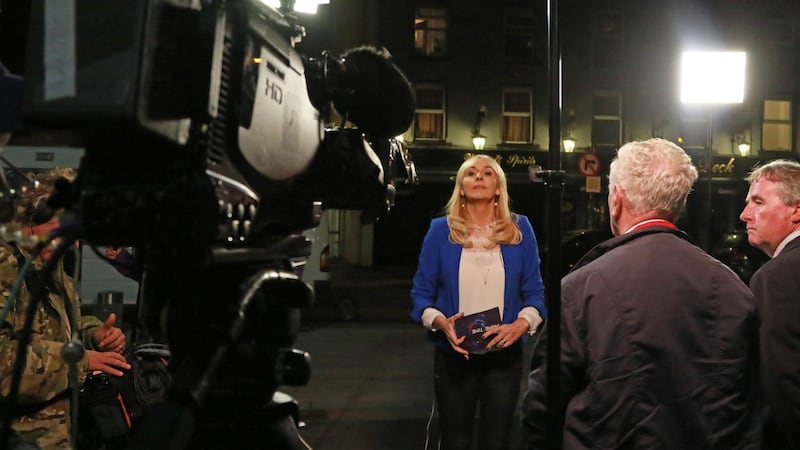
From shattering documentaries like Cardinal Secrets to OMG moments live in studio, the show has been the country's pre-eminent vehicle for current affairs coverage for a generation.
‘Prime Time was a disaster’
Noel Curran, a former director-general of RTÉ who spent most of his programme-making career in the current affairs department and on Prime Time, recalls it had a less than auspicious start.
It was first broadcast on Thursday September 17th, 1992, as part of a wider change to the current affairs schedule. Today Tonight was being replaced by five distinct programmes: the one-on-one interview Farrell on Sunday; Questions and Answers on Monday; Tuesday File (a weekly filmed report); Marketplace, covering business and finance on Wednesday; and Prime Time, with presenters Olivia O'Leary and Brian Farrell, on Thursday evenings.
"On paper it looked brilliant," says Curran. "But Prime Time itself on Thursday nights was a disaster. It was caught constantly between doing the story of the day or the story of the week, or doing a long film.
“Olivia and Brian were at the very top of their game, but they only had 15 minutes each a week to show that. It was as if you had thoroughbreds who could only be trotted out for a few minutes a week.”
In stark contrast, the show's current format is totally flexible. "We can do nearly anything," says Diamond. "I don't know why, but it's the tradition that we're allowed do that. So we had a 25-minute interview with Leo Varadkar, we've had 12-minute pieces, eight-minute pieces. The planned items can be anything, and we'd like to keep it that way."
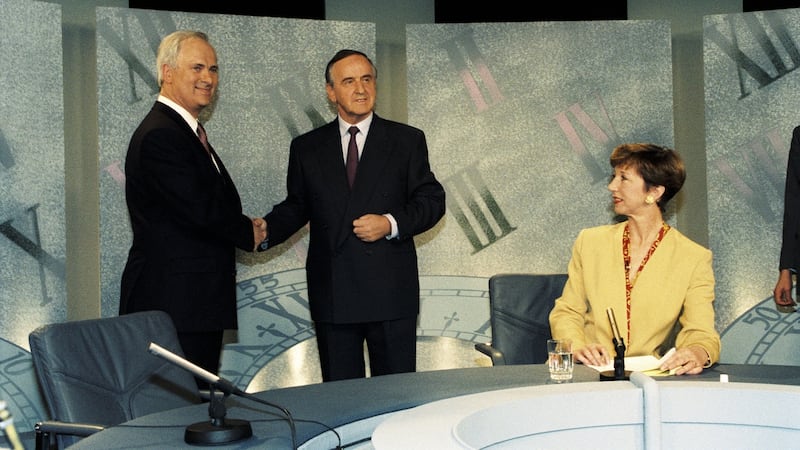
In parallel with the production of the two weekly programmes, the Prime Time Investigations unit works on stories that may end up as short or medium-length packages or as stand-alone documentaries.
‘We want a mass audience’
To understand what's unique about Prime Time, look no further than the name. In the UK, flagship programmes like the BBC's Panorama or ITV's World in Action have been successively starved of resources, dumbed down and ultimately put out of their misery.
But in an era when heightened commercial pressures and a fracturing media landscape have downgraded current affairs TV and pushed it to the margins of the schedules, Prime Time sails on twice a week in those coveted 9.30pm slots.
The reasons for this are complex, but the consequence is that, for RTÉ, as it struggles to redefine and restructure itself for the new media landscape, this is the most important programme it produces, both as a homegrown ratings-winner and a flagbearer for public service broadcasting values.
Over the years, the programme has had its moments of triumph and of deep crisis, but for now it appears relatively stable.
“But we can never take that for granted,” says O’Callaghan. “There are plenty of people who would rather we were not in the 9.30 slot.”
Every night you'd have a unionist or a nationalist talking from a studio in <a class="search" href='javascript:window.parent.actionEventData({$contentId:"7.1213540", $action:"view", $target:"work"})' polopoly:contentid="7.1213540" polopoly:searchtag="tag_location">Belfast</a> at enormous length about the latest small development in the entrails of the peace process
She points to the first current affairs programme she worked on, BBC2's Newsnight. "It's still a very good programme but, like Channel 4 News, which is also very good, it has tiny audiences. They're superb programmes, but they're not broadcasting to my childminder or her family in Tallaght or to the taxi driver who may have driven me today.
“I don’t want to be on that sort of a programme, which is only for elites or for people who are very, very interested in the subject.”
Diamond, who was a reporter with Prime Time before becoming its editor, agrees. "We want to be a mass-audience programme," he says. "Many journalists would prefer to do stuff that went into much more detail about the things they were most interested in. But then you'd end up just talking to yourself."
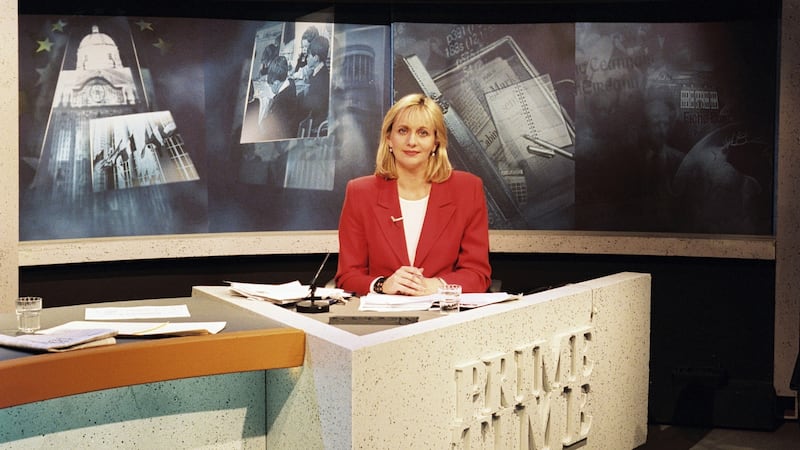
Head of current affairs television David Nally recalls a very different style of broadcasting when he started with Prime Time 20 years ago. "You'd get these very lengthy studio debates with politicians, a lot of which were quite boring, but you'd still get the audience," he says.
"When I first joined, every night you'd have a unionist or a nationalist talking from a studio in Belfast at enormous length about the latest small development in the entrails of the peace process. They didn't really need to think about how much the audience really wanted to know about it, because if it seemed worthy they'd do it and they were almost guaranteed a big audience.
"Now Prime Time has to obsess about whether people really want to hear about this, because people have so many other things on offer. "
The numbers bear him out. In 2017 so far, Prime Time has been watched by an average of 310,000 viewers on RTÉ One, which is 24 per cent of people watching TV at that time, with another 25,000 views on RTÉ One + 1 and the RTÉ Player.
Rewind back 20 years to 1997, and the average audience was 436,000 viewers, which equated to a 37 per cent share of the audience. The decline reflects the fact that there is no such thing as a guaranteed TV audience any more, and that the days of everyone watching the same show at the same time are long gone.
‘There were so many mistakes’
Mark Little joined RTÉ in 1991 and spent several years presenting Prime Time before he left in 2009 to launch digital media start-up Storyful. "When I joined RTÉ I remember a senior executive saying you could put a barking dog on and people would watch it," he says. "There was a sense people would always tune in."
In contrast, Prime Time, he says, has survived and succeeded because "it always managed to blend public service with good telly".
There are dangers in that balancing act, though. Prime Time still bears the scars of the Mission to Prey debacle in 2011, when a Prime Time Investigates film grossly defamed a Catholic priest, Fr Kevin Reynolds.
It was a reminder of how these things can go wrong and a hell of a lesson. Now we feel it was a long time ago. But it's still there in the background
The controversy led to the departure of a number of staff including head of news Ed Mulhall, a censure from the Broadcasting Authority of Ireland and significant damages.
Did hubris and ratings-chasing get the better of the programme?
“There were so many mistakes around that broadcast,” says Curran, who was director-general at the time. “And if you’re having so much success you probably don’t ask as many questions as you should.”
Curran says Mission to Prey could have been "absolutely fatal" for RTÉ's current affairs programming, recalling a reluctance in its aftermath to do any investigative journalism.
“There was a documentary about human trafficking and the question was should we broadcast it at all and should we pack in all the investigations.”
"We think about Mission to Prey all the time," says Diamond, six years on.
“All our procedures were sharpened up at that time,” adds Nally. “It was a reminder of how these things can go wrong and a hell of a lesson. Now we feel it was a long time ago. But it’s still there in the background, that even with great people and a great track record and all sorts of procedures it’s still possible to get it wrong.”
‘The Miriam factor’
By half past eight on Tuesday, David McCullagh is suited and booted on the studio floor. Miriam O’Callaghan is on location and on camera in Portobello, although the satellite link keeps dropping.
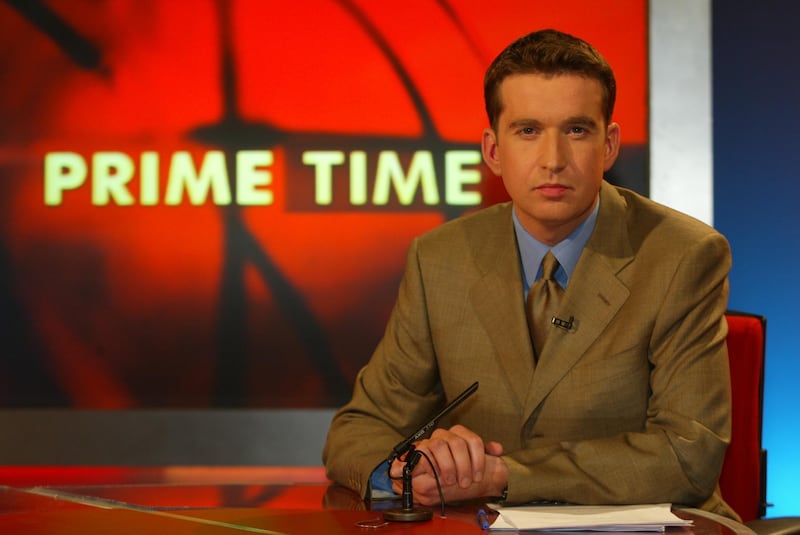
Earlier, I’d expressed some scepticism about the way the show seems to randomly send its presenters out to stand in the dark somewhere for no apparent reason (the Lower Deck pub, where the tenants are meeting, is visible in the background, but they’re not being interviewed). Diamond stoutly defends the tactic. “Getting out of studio is important to avoid any sense of sameness,” he says. “You want to be out and about.”
Meanwhile, McCullagh is rehearsing his intros in studio as the cameras and lights are set. “It could be worse,” he says drily. “I could be in the rain outside the Lower Deck. We do it in turns, so who knows. It could be Washington, it could be the Lower Deck.”
He turns sternly to an imaginary minister in the chair beside him. “So, Eoghan Murphy . . . EXPLAIN YOURSELF!”
He continues: “There’s a lot of hanging around while people get their lighting and shots right. What you want to do is concentrate on the questions that need to be asked.”
Blessed with the sort of face that can convey incredulity and bemusement without appearing downright rude, McCullagh is not a fan of the “why are you lying to me?” school of broadcast interrogation.
It's a programme that addresses issues that really matter to people. It gives me access to stories that matter not just to me but to the people of the country
“I don’t think the viewers like that particularly,” he says. “Whoever comes in, they have their piece to say and they should be allowed to say it. But they shouldn’t be allowed to say it without being challenged.”
By 9.34pm the politicians, in their dark suits, are in position at the back of the studio to await their inquisition, the feed to Portobello is up and running, the atmosphere tightens a little, the way it always does on live TV, as the floor manager counts down, “three, two, one . . .”
Prime Time is back on air.
What does Mark Little think the future holds for the programme?
"Prime Time is on a horizontal axis," he says. "It has to be thinking vertically. Prime Time investigations create so much content. It has to think about making that a vertical experience. The problem for it is it can only go at the speed that the RTÉ ship moves at.
“But my daughter’s 12, and in the future she will laugh at the idea that you have to remember to turn up at 9.30 in the evening to see a particular programme.”
Noel Curran believes a major contributory factor to the show’s continuing viability is “the Miriam factor”. O’Callaghan has been presenting it for a remarkable 21 years. What’s kept her there?
“If I’m honest, offers have come and gone, even within RTÉ, to do something else, and I’ve always said I would never do that,” she says.
Why is that? "Because if I was asked what was the job I wanted to do within my chosen career of broadcasting, I would say fronting Prime Time. It's a programme that addresses issues that really matter to people. It gives me access to stories that matter not just to me but to the people of the country. I can call people with power to account for the viewer. I've always tried to do that."












